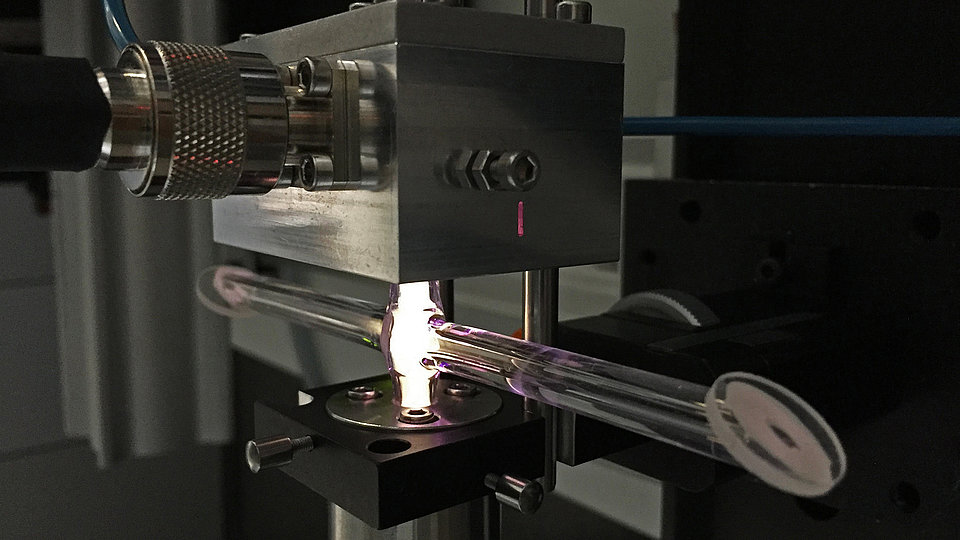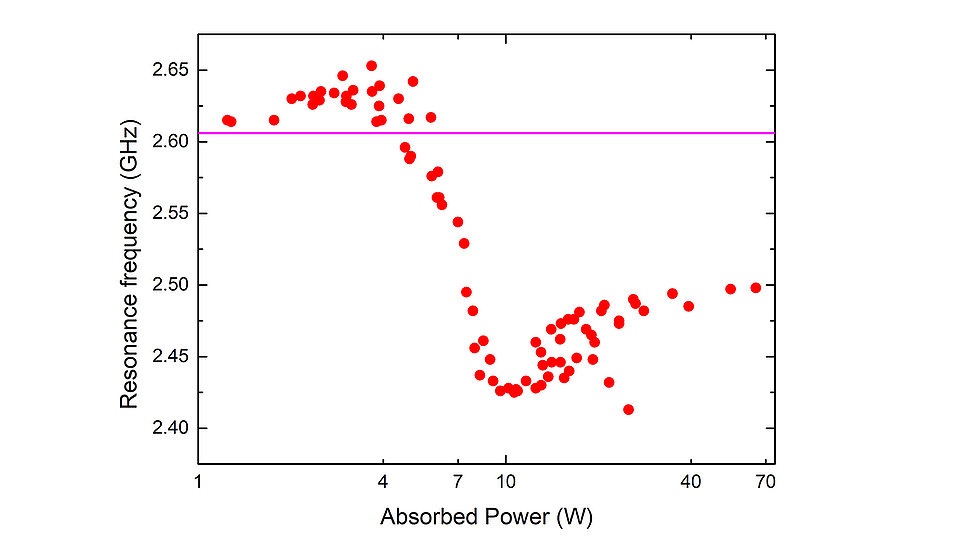Inductively coupled atmospheric plasma sources for the semiconductor industry
Fig. 1: Inductively coupled plasma source driven at 2.45 GHz, working with oxygen – under investigation at Ruhr University Bochum (© Dr. Ilija Stefanović, RUB).
The need of large-area epitaxial growth, primarly in the semiconductor industry, has led to the investigation of a new type of plasma sources. Processing at atmospheric pressure additionally simplifies film growth technology tremendously. An array of microwave-driven, inductively coupled plasma sources (ICP) is an energy-efficient solution that offers a highly qualitative plasma jet.
Our first project studying such ICP sources aimed to determine the conditions under which excitation is inductive rather than capacitive. Meanwhile, we have started a new project, whose purpose is to go into further detail by studying different gases at higher pressure and power. A new generation of sources has been designed and technically realized. These sources allow tuning the resonance frequency and the impedance transformation. In this way, it is possible to work with different gases and pressures, transferring the energy almost ideally.
In our current focus of interest is the excitation of oxygen plasma. The setup depicted in Fig. 1 allows detailed optical investigation of the plasma properties using Two-photon Absorption Laser-Induced Fluorescence (TALIF) spectroscopy and Tunable Diode Laser Absorption Spectroscopy (TDLAS). The purpose of these measurements is to study the efficiency of generating atomic oxygen.
A further ongoing investigation targets the power dependence of the ICP source. Theory predicts that this regime should exist for arbitrary high power. Experiments up to now contradict this fact. Fig. 2 shows that above 20 W absorbed power two modes may appear, here for nitrogen plasma at 1000 Pa.
This research is supported by the German Research Foundation (DFG) under project number 389090373.
Publications
M. Klute, H.-E. Porteanu, I. Stefanović, W. Heinrich, P. Awakowicz and R. P. Brinkmann, "Theoretical investigation of a miniature microwave driven plasma jet", Plasma Sources Sci. Technol. 29, 065018 (2020).
H.E. Porteanu, I. Stefanović, N. Bibinov, M. Klute, P. Awakowicz, R.P. Brinkmann, W. Heinrich, "Correlated Mode Analysis of a microwave driven ICP source", Plasma Sources Sci. Technol. 28, 035013 (2019).

